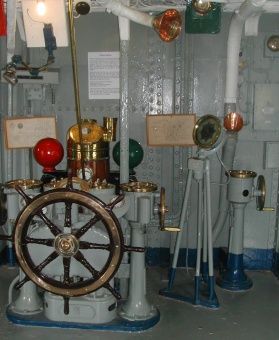QUEENSLAND MARITIME MUSEUM

The word ‘graving’ is derived from the English ‘graven’. Graven was derived from the French ‘grave’ which is a gravel or pebbly shore. The old term ‘graving’ meant to clean and coat a ship’s bottom. A graving dock is now called a dry dock.
The Brisbane Graving Dock – later called the South Brisbane Dry Dock – was built in 1878. When built, it was 318 feet long, but it was extended to 430 feet in 1884. It is 30 feet deep. The walls slope inward with a width of 79 feet at the top narrowing to 52 feet at the bottom. It was built from granite, concrete (this was the first time a concrete mixer was used in Brisbane), and ironwood.
The floating caisson was originally built of wrought iron. Mild steel was used to replace the lower plates in 1950 – after 66 years of use.
The original pump to adjust water levels was operated by hand. It was replaced with steam pumps then electric pumps in 1924.
During World War II, the Brisbane Graving Dock serviced over 350 ships. One hundred forty one of those ships were American, and 85 of those were U.S. submarines. However, the larger Cairns Dry Dock opened in June, 1944, and the Brisbane Graving Dock returned to the service of smaller ships. It continued operation until 1972 when it was closed and left flooded.
The dock was closed and pumped dry with the HMAS Diamantina inside in 1981. The caisson failed in 1998, but it has since been repaired, and the Diamantina remains in ‘dry dock’ within the graving dock.
The HMAS Diamantina is the last survivor of more than 130 ‘river class’ frigates built in World War II. She is also Australia’s largest remaining ship from World War II.
She was commissioned in 1945 and served two years as an anti-submarine frigate named ‘K377’. She provided fire support to the Australian Army on Bouganville.
She was next commissioned as an oceanographic research vessel from 1959 till 1980. In 1960, a research team on board discovered the then-deepest known area in the Indian Ocean – named the Diamantina Deep.
She was decommissioned in 1980 and entered the South Brisbane Dry Dock in 1981. She has been progressively restored since.
Today, visitors are able to tour the bridge, wheelhouse, and decks (forecastle, main, lower, & quarter). Visitors can also see in to the engine room.


Return to our Brisbane page, follow us to the Australia Zoo, or return to our Australia page.